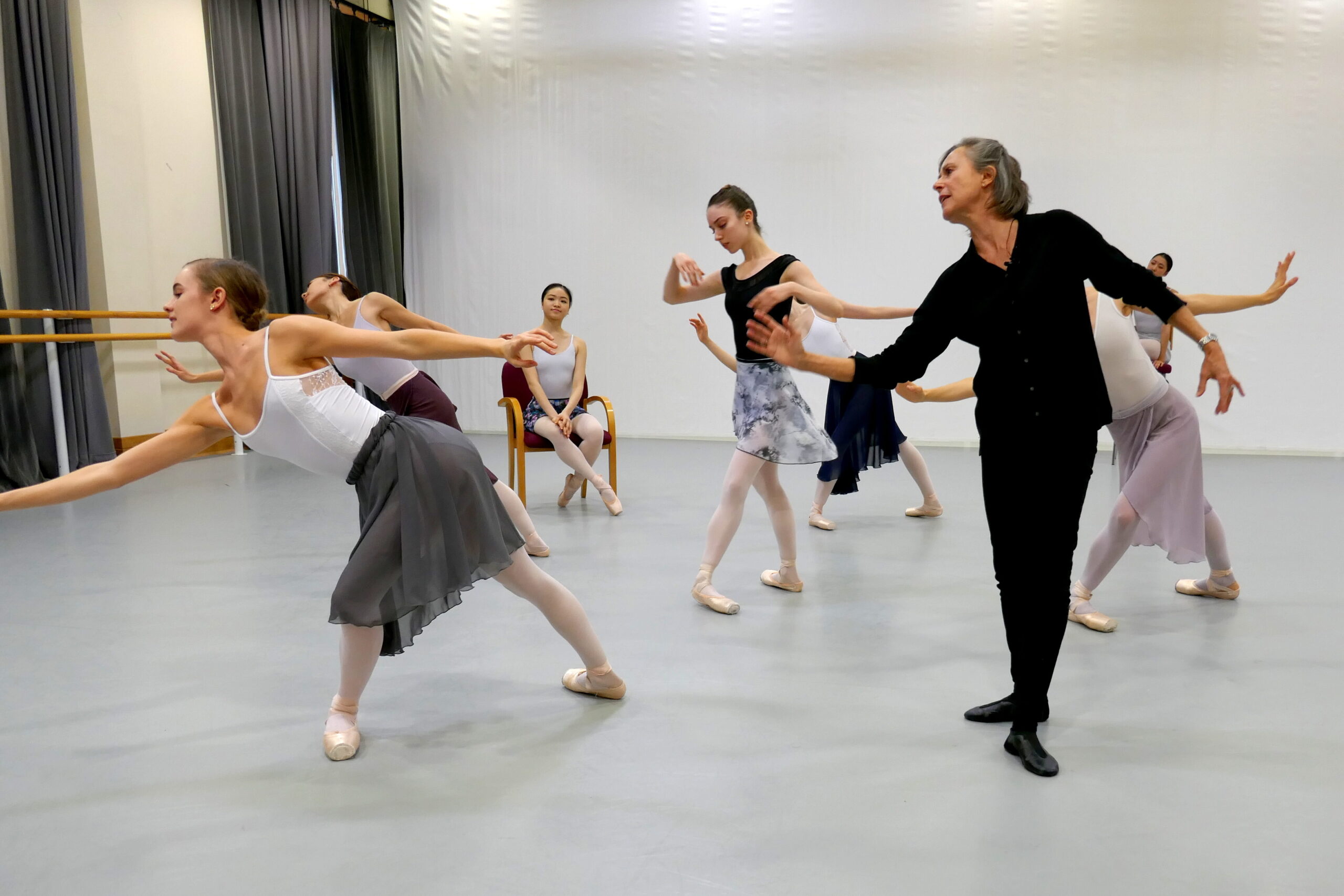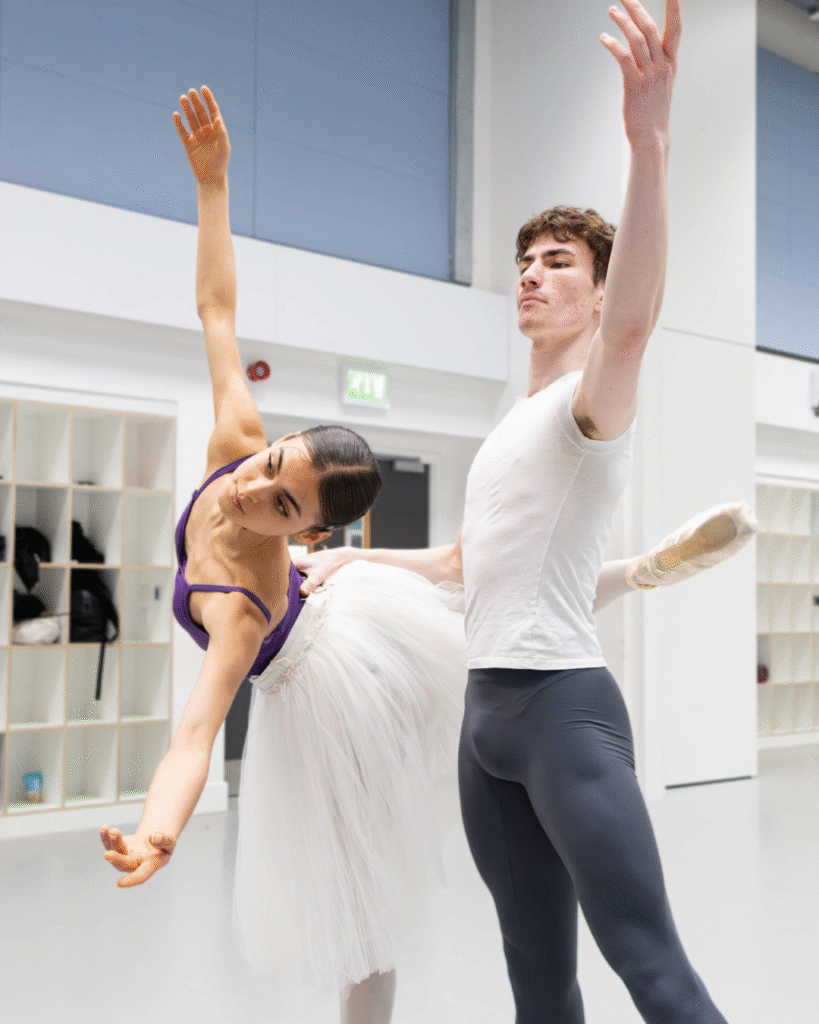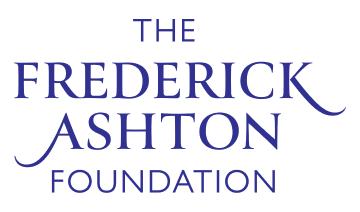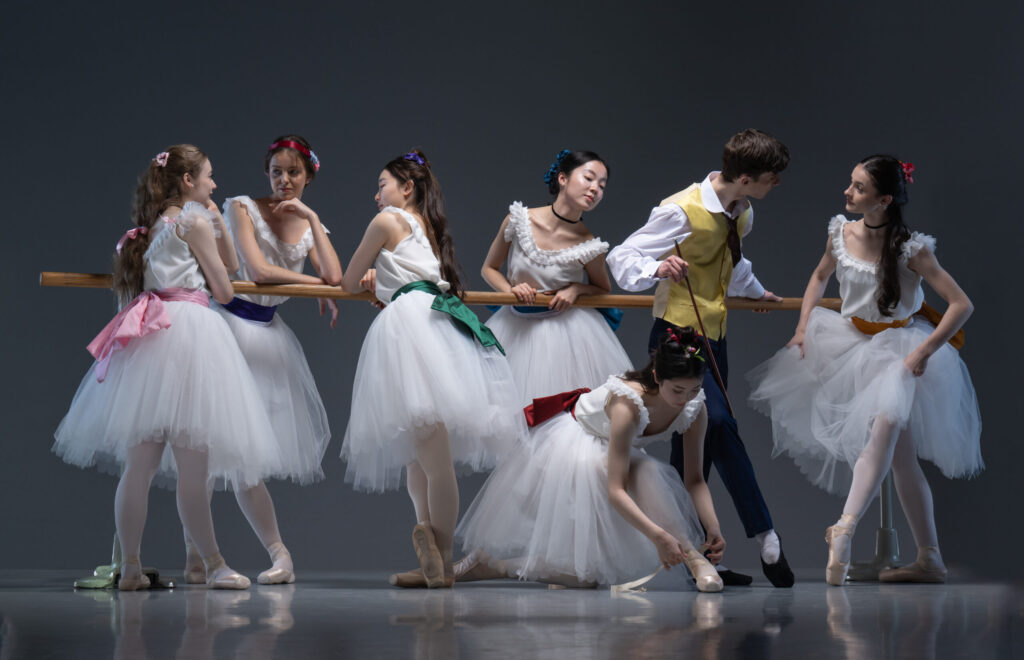Ballet Central dancers Jemima Gosling, Olivia Hayes, Riko Sakai, Ayane Ogino, Tamaki Nakagawa, Archie Anderson and Phoebe Chubb in Ashton’s Foyer de danse ©Central School of Ballet. Ph @photography_byash
This month, Ballet Central launches its annual summer tour around the UK. The programme from the graduating class of 2025 includes a particularly special revival: the first performances of Ashton’s Foyer de danse since 1932. But why was this early Ashton work lost, and how has it been possible to bring it back to the stage over 90 years on? The key to the ballet’s new lease of life lies with Ursula Hageli, former Ballet Mistress of The Royal Ballet.
Animating Degas – the story behind Foyer
Ashton’s ballet opens on a group of dance students, the coryphées, who take a barre under the guidance of their Maître de ballet (originally danced by Ashton himself) before the arrival of L’Etoile (originally Alicia Markova) to the rehearsal and, later, intrusions from a lascivious patron. An ingenious caricature of the hierarchy and goings-on in the company, it charmed audiences and critics alike, described in one review as “a composition as graceful as it is true”. However, the ballet subsequently fell from the repertory.
Foyer de danse was choreographed by Frederick Ashton for the Ballet Club, and given its premiere on 9 October 1932 in Marie Rambert’s bijou, 150-seater Mercury Theatre in Notting Hill Gate. The ballet animates Edgar Degas’ iconic paintings and pastels of Paris Opera Ballet dancers—a popular subject among choreographers, reflected in previous works including August Bournonville’s Le Conservatoire (1849).
A forgotten jewel
At the time of the 1932 performances, a post-show experiment at the Mercury led to the capturing of some amateur footage of Foyer; filmed for fun rather than for archival purposes, and existing only in short bursts without any musical accompaniment. It was while undertaking research for a 2011 ‘Insight Evening’ at the Royal Opera House in conjunction with the Royal Academy’s Degas exhibition that Ursula Hageli first came across these fuzzy, black-and-white frames—a discovery she describes as a revelation: “The more I got into it, the more I realised what a little gem it was”, she explains.
Glimmers of genius
Initially mentored by Christopher Newton, a former Royal Ballet dancer and ballet master who worked with Ashton, Hageli went on to source a piano transcription of Foyer’s original music (Lord Berners’ 1930 ballet Luna Park; or, the Freaks) and began, painstakingly, to match the jerky, recorded movement to this score. This was no mean feat, with parts of the film very hard to make out, and sections of the music, such as the coda, that didn’t seem to correlate with the movement.
Elements of Ashton’s reconstructed choreography – a group adage, and a solo for the star ballerina – were first seen at a Frederick Ashton Foundation ‘Ashton Rediscovered’ masterclass given by Hageli and Newton in 2019, revealing tantalising glimmers that foreshadowed later Ashton works such as The Two Pigeons, Les Rendezvous and even his best-loved La Fille mal gardée.

Ursula Hageli coaching Royal Ballet dancers Ginevra Zambon (L’Etoile) and Madison Bailey, Bomin Kim, Annette Buvoli, Mariko Sasaki, Yu Hang and Sumina Sasaki (coryphées) in an extract from Foyer de danse during an Ashton Rediscovered masterclass, October 2019 ©The Frederick Ashton Foundation. Ph Rachel Thomas.
Bringing Foyer to fruition
For several years following that event, Hageli worked in conjunction with the Foundation as she continued to decipher Foyer. Discovering, in a biography of Lord Berners written by Mark Amory, that the composer had been willing and accommodating when Ashton wished to make adaptations to the score, she was prompted to experiment with its order herself and found that, with some musical reshuffling, it was a perfect fit for the choreography on film—allowing the complete ballet to take shape.
This reordered score, as well as the original set and costumes by William Chappell, were subsequently reconstructed in vivid detail by the team at Ballet Central, including Music Director Philip Feeney and Production Manager/Designer Chloe Ivey-Ray. More recently, Hageli and the school have spent months preparing Foyer for Central’s tour, the students embracing and learning from signature elements of Ashton’s style – including expressive épaulement and challenging musicality – present even in this early piece.
Reflecting upon the relevance for today’s audiences of a miniature genre ballet from the very beginning of Ashton’s career, Hageli is certain that “it absolutely deserves to be seen. It was created by a genius.” Encapsulating not only the technique, but the grace and wry humour that were to become such quintessential features of his later output, Foyer de danse is an important example of Ashton’s nascent style—and it is thanks to Hageli’s patience and tenacity that it has been revived, vibrant and refreshed, for the future.



Ballet Central dancers Archie Anderson and Phoebe Chubb; Jemima Gosling; Tara Darlami and Archie Anderson (L to R) rehearsing Ashton’s Foyer de danse ©Central School of Ballet. Ph @lshphotographs
Dance Europe’s short film featuring Ballet Central in rehearsal for Foyer de dance, with a commentary from the dancers and Ursula Hageli. Filmed and edited by Emma Kauldhar.

